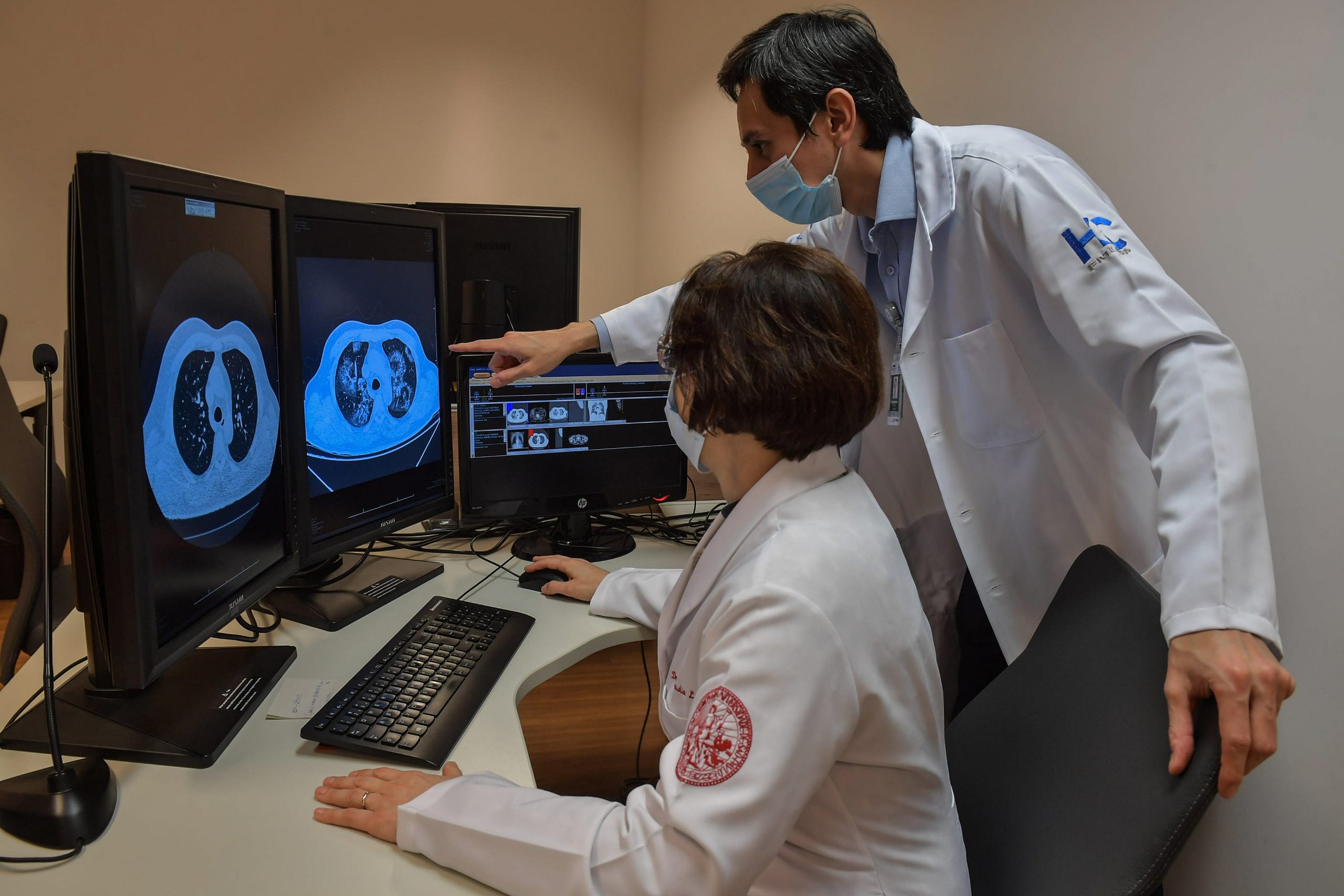
- AI is at the forefront of radiology, but clinicians are still adapting to its use.
- Technology advancements could one day help predict disease response.
- Proper training can prepare future physicians for this rapidly evolving field.
- This article is part of the "Healthcare Innovation" series, highlighting what healthcare professionals need to do to meet this technology moment.
Developments in artificial intelligence are opening up new possibilities in radiology. The advancements help doctors conduct more accurate diagnoses and predict patient outcomes.
"It's a really exciting time for medicine," said Dr. Yvonne W. Lui, associate professor of radiology and associate chair for artificial intelligence at NYU Grossman School of Medicine. "We're seeing the implementation of AI or machine learning tools across disciplines, and diagnostic imaging has always been at the forefront of these technological advances."
In a 2020 membership survey, the American College of Radiology (ACR) found that 30%of radiologists are using AI in clinical practice to improve image interpretation of intracranial bleeding, artery blockage in the lungs, and breast abnormalities. The 20% of practices not using AI reported that they plan to incorporate the technology into the clinic within the next several years. The ACR's Data Science Institute also publishes a running list of FDA-approved AI radiology technologies.
Radiology is still adjusting to AI tools in the clinic, Lui said. "There's no road map right now. I think people are trying to figure out what the best path forward is and how to use certain tools."
Diagnosing patients may be the beginning of AI's potential in radiology, according to Dr. Anant Madabhushi, director of the Center for Computational Imaging and Personalized Diagnostics at Cleveland's Case School of Engineering. "The opportunities around treatment management, monitoring, and response prediction are going to be potentially even bigger than the diagnostic implications," he said. Training the next generation of radiologists in AI is important to ensure that the technology is applied properly in the clinic, he added.
Diagnosing patients beyond the disease
Much of the buzz surrounding AI in radiology has focused on classification tools. For example, clinicians use AI to determine whether a finding on an image is normal or abnormal, such as whether there is a pneumothorax - or the leakage of air between the lung and chest wall - or no pneumothorax.
This technology can help clinicians parse millions of tiny bits of information. Researchers are developing AI that can speed up and make the task of interpreting an image more accurate. Quantifying and identifying tumor volume, new lesions, and tissue changes over time can be especially valuable, she said.
Scientists are also trying to determine how AI can evaluate images in a new way. "We're asking whether images contain information that we have not previously been sensitive to," Lui said. Her own research is evaluating whether AI can help detect a signal on images of concussion patients to help identify injury and monitor recovery.
AI perhaps may help with the prediction of cellular response to cancer treatment and treatment monitoring, which could help to avoid the need for invasive biopsies, Madabhushi said. "There are multiple different scenarios where the features on imaging are so subtle that it truly becomes impossible to distinguish between a treatment confounder versus disease," he said.
For example, benign radiation necrosis, which is a lesion that forms at the tumor site because of radiation or chemoradiation, can be challenging to distinguish from tumor recurrence. AI can be an important support tool enabling radiologists to make this distinction and avoid the need for an invasive biopsy, Madabhushi said.
In his own research, Madabhushi is investigating how AI in radiology can noninvasively identify prostate cancer and risk-stratify its aggressiveness on an MRI scan to help guide treatment decisions. "What we're trying to do is actually create a virtual biopsy," he said.
AI in radiology training
The Radiologic Society of North America offers continuing medical education in artificial intelligence and imaging, webinars, and an AI certificate program. The Data Science Institute of the American Academy of Radiology (DSI ACR) also offers conferences on how to use AI in clinical practice, assess AI algorithms, and a variety of online use cases.
NYU Grossman School of Medicine offers a formal AI in biomedical imaging curriculum to radiology residents. Courses on machine learning in radiology are also available to medical students and fellows, while radiology research opportunities are open to doctoral candidates.
Madabhushi encourages medical students who are interested in AI in radiology to look for opportunities within their institutions to work with biomedical engineers and computer scientists specializing in bioinformatics.
"You want students to have an appreciation of what it takes to train radiology AI algorithms, how to interact with AI, and to understand its limitations," he said. "This collaboration breaks down some of the misconceptions about what AI can and can't do."

